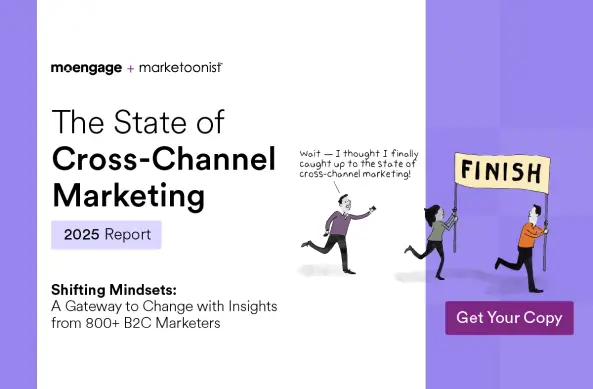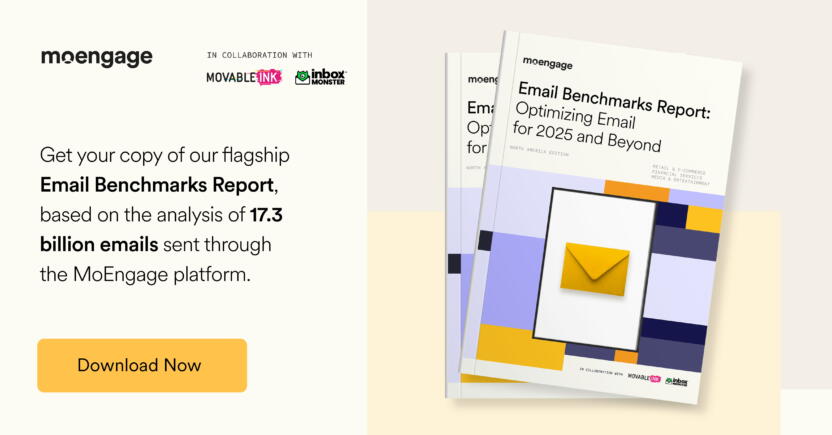The Ultimate Email Marketing Best Practices Cheatsheet
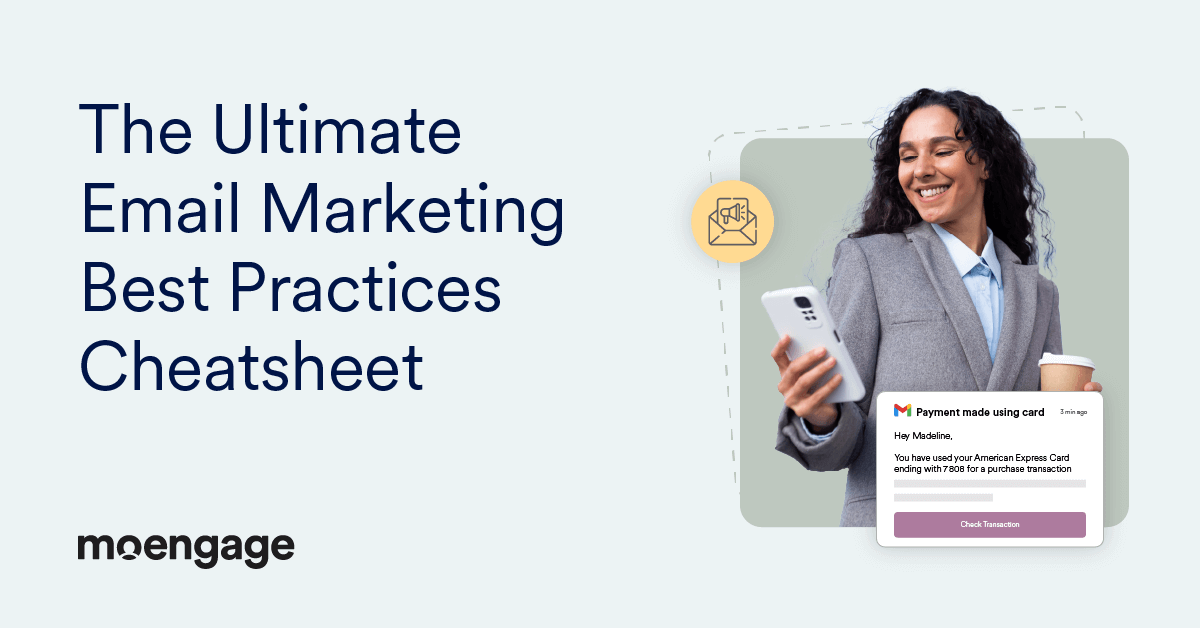
Reading Time: 9 minutes
Despite the rising popularity of other marketing channels, emails are still one of the most effective ways to communicate with customers. That’s because, unlike other channels, emails are more one-to-one, personalized, and cost-effective. According to Statista, in 2022, over 333 billion emails were sent and received daily worldwide. That number is set to reach 392.5 billion by 2026. At the same time, consumers often get inundated with too many emails in their inboxes, so brands need help to capture their attention and stay relevant. That’s why it’s essential to understand and implement effective email marketing best practices to ensure that your emails provide the best ROI.
In this article, we’ll cover the best email marketing practices to enhance your email campaigns’ effectiveness, engagement, and conversions.
The best practices for email marketing can be categorized into four areas:
- Audience: Audience-focused best practices focus on building and maintaining a good relationship with email consumers.
- Content: Content-focused practices revolve around creating emails with visually appealing designs and good content that resonates with email consumers.
- Action: Action-oriented practices involve creating solid calls to action (CTA) that nudge the consumer to take the necessary action.
- Frequency: Frequency-based practices focus on finding the ideal cadence to deliver timely and relevant emails to consumers.
We’ll also share a few examples of email marketing and delve into the different aspects of email marketing, such as segmentation, personalization, consumer journey optimization, and some proven strategies to help you get the most out of it.
Email Marketing Best Practices #1: Segmentation
Types of Email Segmentation
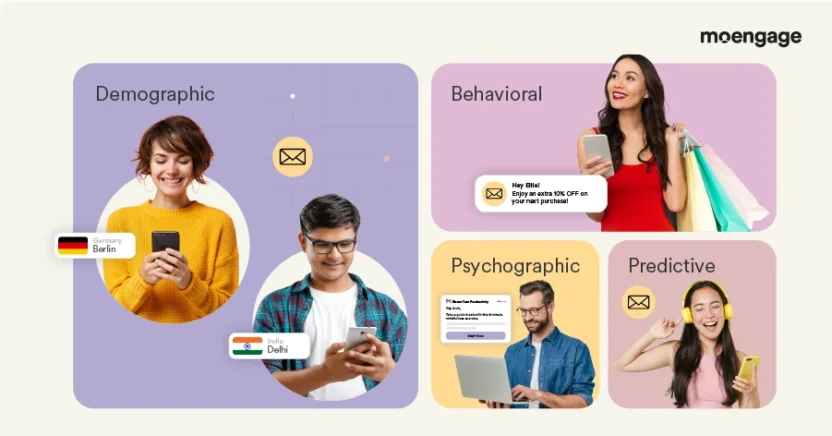
Segmentation is the process of grouping consumers based on:
- Demographics: In demographic segmentation, you can break down your ideal customers into groups based on their age, gender, occupation, geographic location, income, and more.
- Behavior: Behavioral segmentation involves grouping consumers based on their behaviors, buying habits, attitudes, and preferences. Unlike demographic segmentation, which is superficial, behavior segmentation delves deeper. For instance, it allows you to segment consumers based on specific factors like clothing style rather than general demographics.
- Psychographic: Psychographic segmentation segregates consumers based on their personalities and interests. This could include hobbies, lifestyle choices, cultural beliefs, and values.
- Predictive: Predictive segmentation helps you create custom segments and tailor campaigns based on the customer behavior data you collect. You can use tools like Predictions to forecast customer actions in the future and develop highly targeted email campaigns to nudge the customer to take the desired action.
Take the example of Fynd, one of India’s largest omnichannel retail business platforms that allows businesses to manage their inventory, campaigns, and orders. They faced a low customer return rate of 2%. Using MoEngage’s Prediction tool, they identified ideal audiences for engagement and those likely to churn. They created sub-segments and sent targeted emails, which helped them double the open rates (3-5% to 6-8%) and boosted retention by 129%.
Customer segmentation is a powerful tool for developing hyper-personalized email marketing campaigns. By understanding different consumer groups’ unique needs and preferences, you can personalize your communication and product offerings.
This tailored approach helps improve customer loyalty, identify potential high-value consumers, and understand and address consumer pain points. Segmentation can help you identify market gaps and develop products and offerings to give your business a competitive edge.
Advanced Segmentation
While demographic, psychographic, behavioral, and predictive segmentations are effective, you can go beyond that to deliver a hyper-personalized consumer experience. For example, you can use the Recency, Frequency, Monetary (RFM) model to identify loyal consumers based on their recent, frequent, and higher-value purchases and reach/engage them with personalized campaigns. We invited a few industry leaders to share their thoughts on segmentation, and here’s what they had to say:
-
- Use year-on-year aggregated consumer data, preferences on a granular level, repeat behavior, purchase drivers, incentives resonating with the audience, and preferred communication channels while designing the email campaigns.
- Look at the customer’s predictive lifetime value and journey and work backward depending on your goal.
- Do not cross the line between personalization and privacy. Adhere to the General Data Protection Regulation (GDPR) while personalizing the journey.
Email Marketing Best Practices #2: Personalization
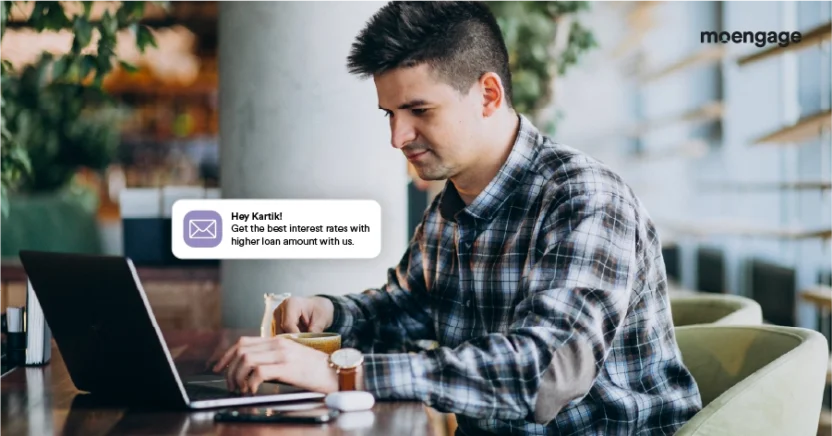
Personalization is the next step of segmentation. It helps you create contextually relevant content for each segment and build micro-moments for them inside and outside digital platforms. According to MoEngage’s Personalization Pulse report, 25.3% of globally surveyed consumers want brand communication based on past communication. 13% of consumers from the North American region stated that they get frustrated when brands don’t understand or remember their preferences based on previous purchases.
However, while brands understand the significance of personalization, they face challenges due to the ‘Personalization Paradox.’ In the personalization paradox, consumers want personalized recommendations beyond addressing them with their first names but are also wary about sharing too much data with the brands. There’s a thin line between personalization and privacy invasion that brands have to maintain.
To overcome this problem and master personalization, you can follow the below techniques:
Personalized Recommendations
Instead of sending the same message to every consumer, you can use Personalized Recommendations to hyper-personalize the content. For example, a retailer can map every shopper’s attribute with the product catalog. To improve conversions, they can auto-generate and deliver hyper-personalized messages and product recommendations to consumers at the right micro-moment.
Personalized Automation
Email personalization is not just about sending the right message; it’s also about sending the communication at the right time. That’s where Personalized Automation come into play. Personalized Automation can deliver real-time messages to your consumers based on their activities. Oyo is one of the best email marketing examples we have seen recently. They used Personalized Automation to send personalized offers and discounts to consumers based on their app usage, search, and booking history. This helped them increase the CTR by 2x.
Website Personalization
Website personalization enables you to create dynamic campaigns and tailored content for each website visitor. This helps brands improve customer experience and increase web engagement. You can use strategies like Web Personalization to gather information on the visitor’s attributes and behaviors and provide a seamless and personalized experience throughout the purchase journey.
Email Marketing Best Practices #3: Customer Journey Optimization
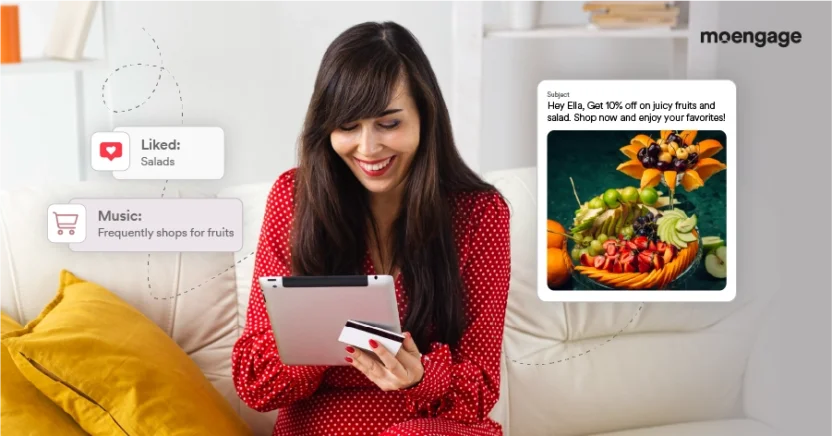
Typically, a consumer goes through one or more of the following stages once they discover your brand and sign up for emails:
- The onboarding stage, where the consumer is onboarded and explores your offerings
- The engagement stage, where the consumer is actively engaged and nudged to take action
- The retention stage, where the consumer is encouraged to engage and purchase more
- The reactivation stage, where dormant consumers are re-engaged
Every stage has a different goal. Optimizing the entire journey to achieve those goals is essential. This involves using specific strategies for each stage. Let’s examine them.
Onboarding Stage
The consumer has already created a new account or downloaded your app. The focus with email marketing best practices is to help them discover the product or app and take the first step, such as completing their KYC or adding their delivery/payment details. You can send them a series of welcome emails explaining how to use the app.
Engagement Stage
In the engagement stage, the objective is to increase the consumer lifetime value (CLTV), deepen consumer loyalty, and improve retention. To achieve these goals, you can send consumers personalized emails with recommendations based on their behavior and previous purchase history. You can also send them reminders to complete the checkout process if they have abandoned the cart and send timely and relevant communication during events like flash sales to increase conversions.
Retention and Reactivation Stage
It’s no secret that retaining consumers is more effective than acquiring them. Thus, focus on retaining or reactivating consumers who have not opened the app or purchased anything in the last 15 to 30 days. To improve the retention rate, you can send them exclusive offers or invite them to join the loyalty program. This will help re-ignite their interest in your app and encourage them to resume shopping.
In addition to these strategies, remember to personalize your communication, maintain consistency across all channels, communicate regularly, gather feedback, and use an intelligent Path Optimizer to distribute consumers to the best-performing path. This will help you improve conversions, engage consumers, and foster long-term loyalty.
Strategizing the Best Timing to Send Emails
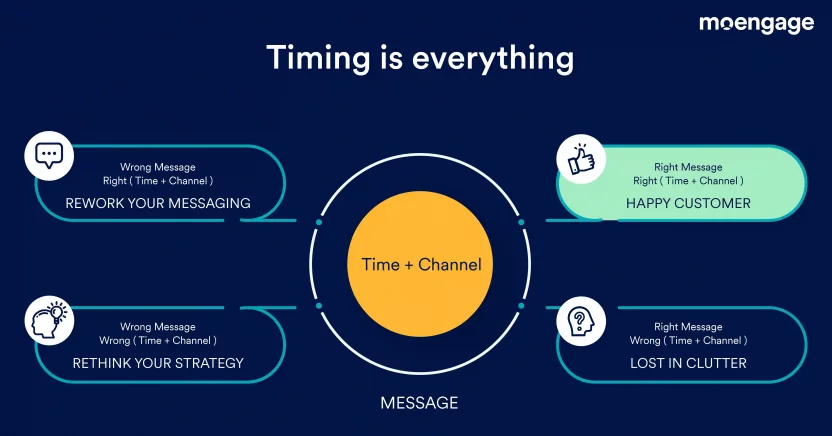
What’s the best time to send an email to consumers? That’s the question many marketers ask themselves while sending emails. Some might say the best time is on a weekend or a Wednesday afternoon. If you ask us, there’s no ideal time or day to send an email.
The important thing to remember is not to send a good morning email at night or a bon appetit email at 4 AM. Consumers detest these emails and might not hesitate to unsubscribe from your mailing list if you send them at the wrong time.
However, you can safeguard your brand’s reputation using algorithms like MoEngage’s proprietary Best Time to Send algorithm. Best Time to Send uses advanced data analysis to analyze historical customer interactions with email activities such as opens, clicks, and browser views to determine the consumer’s affinity for a product.
This data is then used to create a personalized schedule and predict the best times for the consumer to receive messages based on their historical engagement patterns. Identify peak engagement times for each customer to maximize the chances of messages being seen and acted upon.
A data-driven approach like this can eliminate all the guesswork and enable you to determine the best time to send emails to each consumer by considering their behavior and preferences. It can help brands increase conversion rates by up to 64%.
The Power of A/B Testing
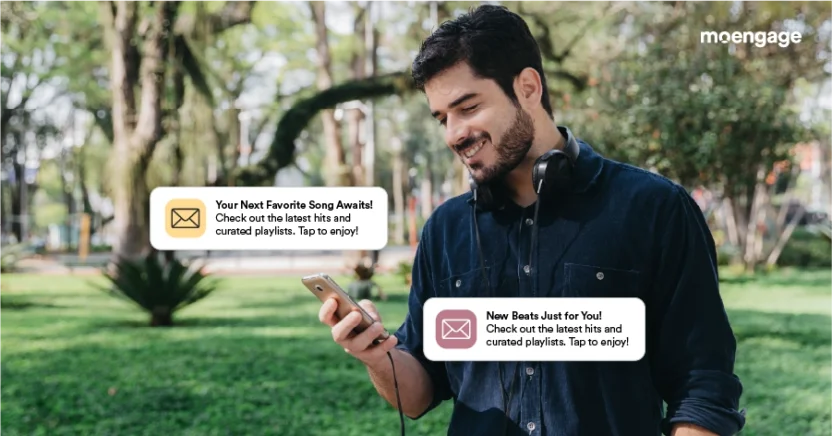
One of the biggest email marketing best practices is A/B testing. A/B testing or split testing is an experimental process of comparing two variations of a message copy against each other by sending them to an equal number of randomly chosen consumers. The objective is to identify which message performs better and drives your engagement metrics.
However, merely A/B testing the email marketing campaigns is not enough. If you need a more effective strategy, use an AI-powered content optimization tool. Unlike traditional A/B testing, AI tools help with dynamic A/B testing. They monitor the performance of each variation in real time and automatically direct more traffic toward the better-performing one.
Some of the elements that you can A/B test include:
- Image vs. no-image: You can test whether including an image impacts the CTR.
- Variations in promotional offers: You can use different variations of promotional offers to gauge which one resonates the most with the ideal audience and drives higher engagement.
- Variations in headlines, CTAs, etc: You can experiment with different headlines and CTAs to determine what has the higher CTR.
Crafting Winning Subject Lines
Do you know over 82% of consumers don’t open their emails? Harsh as it might sound, consumers won’t open your email until it has a captivating subject line. According to Invesp’s data, 47% of email recipients open a brand’s email, and 69% report it as spam, depending on the subject line. Thus, crafting compelling subject lines is the only way to boost open rates.
To craft compelling subject lines, put yourself in the consumers’ shoes and understand what they want to read about.
Let’s look at a few techniques and email marketing examples you can follow:
- Create urgency or an element of scarcity so that the consumer feels the fear of missing out (FOMO) on something. Words like “expiring in a few hours” and “limited seats left” are examples that create urgency among consumers.
- Fear and greed are the strongest emotions in humans. If fear nudges a consumer to take action immediately, greed motivates them not to let a good deal pass easily. Subject lines like ‘Alert! Flash sale!’ and ‘Buy two, get one free’ can help consumers make the most of deals.
- Personalize the subject line, as that could boost the open rate by 7.4% and help you achieve six times higher transaction rates. For example, ‘Happy birthday, [Name]! Look inside for your surprise’ or ‘[Name], check out these hand-picked deals for you,’ which can help make the subject lines more personal and encourage consumers to click on them.
- Always remember to use powerful words in the subject line to evoke a strong emotion or response within the consumer. Some powerful words, such as exclusive, limited, hurry, profit, save, boost, and breathtaking, can significantly impact the open rates.
Email Marketing Best Practices that Convert
Email marketing is the most cost-effective way to connect with your consumers and drive engagement. It can generate an ROI of $36-$42 for every dollar you spend. However, it’s essential to implement and follow the best email marketing practices. By focusing on your audience, crafting compelling content, including strong calls to action, and following the email marketing frequency best practices, you can:
- Build Stronger Relationships: Segment your audience and personalize emails to foster a sense of connection and understanding with your subscribers.
- Drive Action: Send a well-timed, relevant email with a powerful subject line and straightforward call to action to significantly increase click-through and conversion rates.
- Maximize Results: Perform A/B testing and use optimization tools to refine your campaigns for optimal performance.
- Unlock the full potential: Continuously iterate, test, and learn from the email marketing campaigns to optimize email marketing campaigns.
Leverage these email marketing best practices with MoEngage. Request a Demo for a quick walkthrough.

